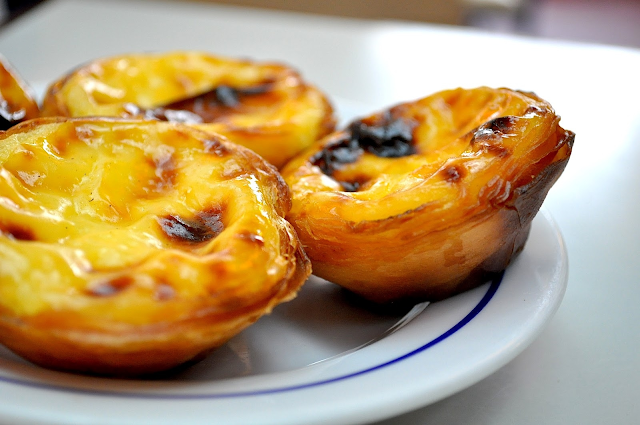Traditional Portuguese desserts: Pasteis de nata
Pastel de nata (Portuguese custard tart)
The "Pastel de Nata" is the most iconic typical pastry from Portuguese cuisine. It's a creamy custard tart available in all the bakeries in Portugal. It can be eaten at breakfast, after lunch, or the evening, any time you're craving a snack. They're also called "Pastéis de Belém" (pastries of Belem).
History
The pastry was created in the 19th century in Belem, near the Jeronimos Monastery, where was located a small sugar cane refinery attached to a small general store. As a result of the 1820 liberal revolution, all the convents and monasteries were shut down in 1834. The clergy and labourers were expelled.
In an attempt at survival, someone from the monastery offered sweet pastries in the shop. These pastries became known as "Pastéis de Belém" (Pastries of Belem).
At that time, the area of Belem was considered far from Lisbon and was mainly accessed by steam-boats. However, the sumptuousness of the Jeronimos Monastery and the Tower of Belem, attracted visitors who grew used to savouring the delicious pastries originated in the monastery.
In 1837, the baking of the "Pastéis de Belem" began in the buildings attached to the refinery, following the ancient "secret recipe" from the monastery. Passed on and known exclusively to the masters confectioners who hand-crafted the pastries in the "secret room".
This recipe remains unchanged to the present day. Nowadays, all the coffee shops and bakeries in Portugal have the "Pastel de Nata", but the "Fabrica dos Pastéis de Belém" is the only place where you can buy the true "Pastéis de Nata".
 |
| Fabrica dos Pasteis de Belém |







Comments
Post a Comment